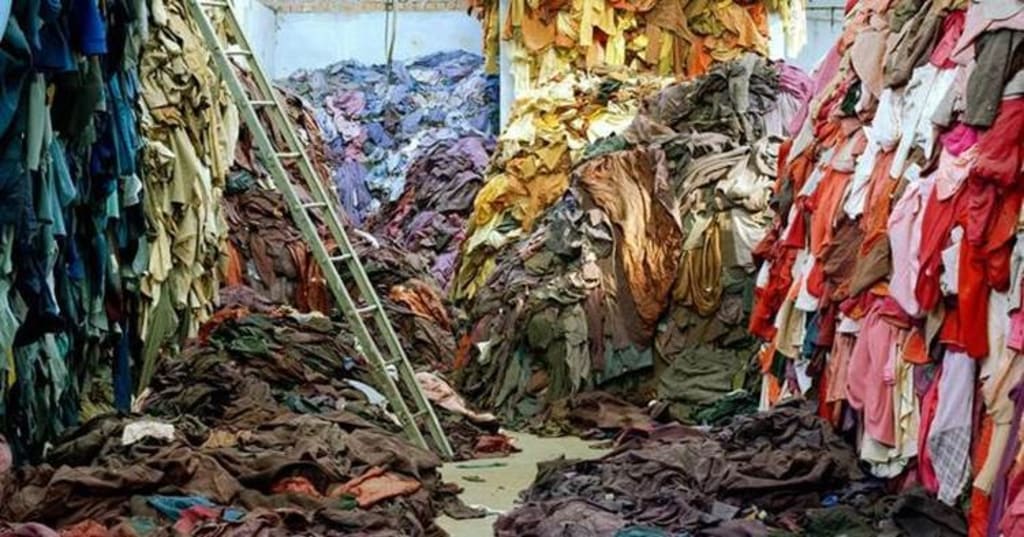The Surprising Impact of Fast Fashion on the Environment
Unveiling the Hidden Consequences

Introduction:
In our fast-paced world, fashion trends come and go in the blink of an eye. As consumers, we often find ourselves captivated by the allure of affordable, trendy clothing. However, what lies beneath the surface of this seemingly harmless indulgence is a shocking truth: fast fashion's detrimental impact on the environment. In this article, we delve into the surprising and often overlooked consequences of the fast fashion industry, shedding light on the urgent need for sustainable alternatives. Brace yourself for a journey that will change the way you perceive your favorite fashion fixes.
Environmental Footprint: The Fast Fashion Monster
Fast fashion thrives on rapid production and turnover, resulting in an insatiable demand for raw materials. From cotton to polyester, these materials require vast amounts of water, energy, and chemicals to manufacture. As a result, fast fashion is responsible for enormous water pollution, greenhouse gas emissions, and depletion of non-renewable resources. Unveiling this environmental monster leaves us with no choice but to reassess our fashion choices.
The Dark Side of Fast Fashion:
Fast fashion is characterized by its low-cost, high-speed production model, designed to cater to rapidly changing consumer demands. However, the consequences of this model are dire. The environmental impact begins with the immense amount of water, energy, and raw materials required for garment production. From the cultivation of cotton to the extraction of petroleum for synthetic fabrics, fast fashion depletes precious resources and contributes to greenhouse gas emissions.
Toxic Trail: The Dark Side of Clothing Production
Beyond the environmental consequences, the fast fashion industry has a toxic trail that spans from production to disposal. Garment workers endure abysmal working conditions and receive inadequate wages, often toiling away in sweatshops. Moreover, the use of hazardous chemicals in dyeing and finishing processes pollutes local ecosystems and endangers the health of workers and nearby communities. This shocking reality should make us question the true cost of those bargain-priced garments.
Throwaway Culture: Fueling Waste and Landfills
Fast fashion has fueled a throwaway culture, where garments are considered disposable commodities rather than cherished possessions. The rapid turnover of trends leads to a staggering amount of textile waste, with a significant portion ending up in landfills. Synthetic fibers, such as polyester, can take hundreds of years to decompose, exacerbating the waste crisis. By embracing more sustainable fashion practices, we can break free from this cycle of waste and minimize our impact on the planet.
Slow Fashion Movement: Embracing Sustainability and Ethical Choices
In the face of these alarming realities, a growing movement is challenging the fast fashion paradigm. The slow fashion movement encourages consumers to make mindful, ethical choices by investing in durable, timeless garments and supporting local artisans. By valuing quality over quantity, we can reduce the demand for fast fashion and contribute to a more sustainable future. Discover how you can join this movement and become a catalyst for change.
Waste Overflow: Mounting Fashion Landfills:
Fast fashion's obsession with rapid turnover leaves a trail of waste in its wake. With trends changing almost weekly, consumers are encouraged to discard perfectly wearable garments in favor of the latest styles. This culture of disposability has resulted in overflowing landfills and an alarming amount of textile waste. Moreover, the decomposition of synthetic fibers can take hundreds of years, exacerbating the problem. The fashion industry must address this unsustainable cycle and explore innovative solutions to reduce textile waste.
Sustainable Fashion: The Need for Change:
The good news is that a growing awareness of the environmental impact of fast fashion has spurred the rise of sustainable alternatives. From eco-friendly fabrics and ethical manufacturing practices to recycling initiatives, the fashion industry is slowly embracing change. Consumers, too, have a crucial role to play by making conscious purchasing decisions, supporting sustainable brands, and embracing a minimalist mindset. By demanding transparency and sustainability, we can push the fast fashion industry toward a more environmentally responsible future.
Conclusion:
Fast fashion's surprising impact on the environment is an urgent issue that demands attention. As consumers, we hold the power to drive change and make a positive difference. By educating ourselves about the hidden consequences of fast fashion and choosing sustainable alternatives, we can create a ripple effect that reverberates throughout the industry. Let us challenge the status quo, inspire others, and work together to protect our environment for future generations. It's time to unveil the hidden truths, embrace sustainability, and leave a lasting legacy of responsible fashion.
About the Creator
Evans
Startriti
Enjoyed the story? Support the Creator.
Subscribe for free to receive all their stories in your feed. You could also pledge your support or give them a one-off tip, letting them know you appreciate their work.





Comments
There are no comments for this story
Be the first to respond and start the conversation.